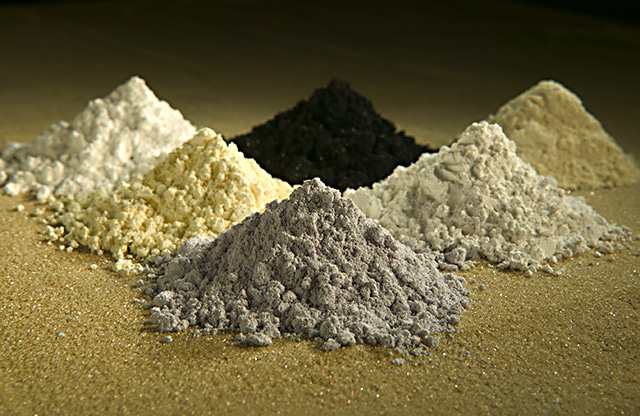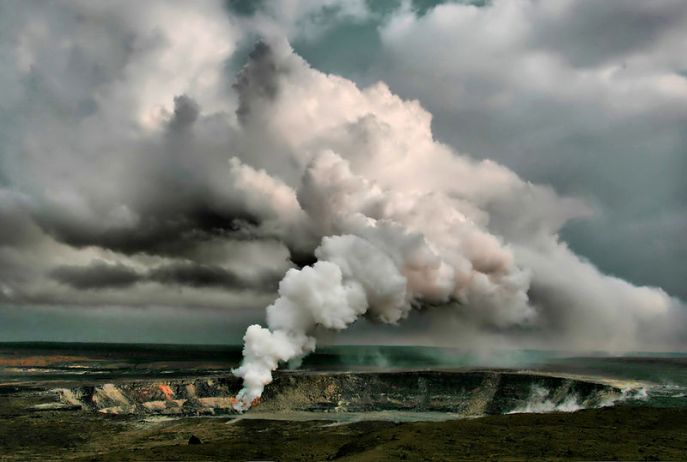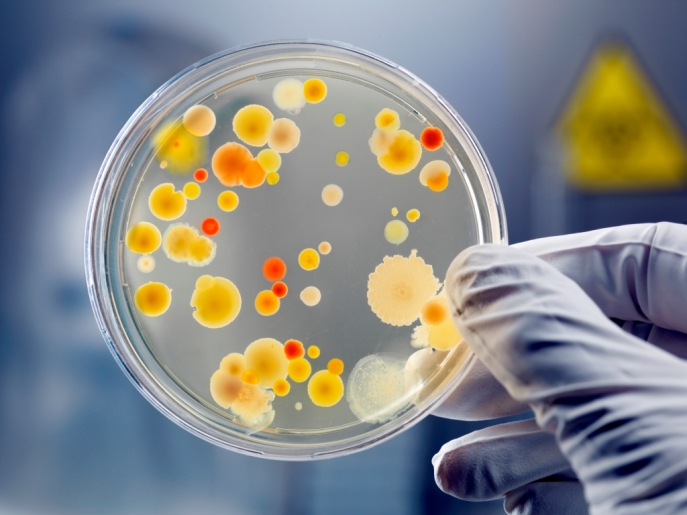
Rare earth elements, highly coveted in the tech industry, are difficult to mine because of their low concentrations in the Earth’s crust. Clockwise from top center: praseodymium, cerium, lanthanum, neodymium, samarium, and gadolinium.
Credit: Wikipedia
Most of us pay little heed to rare earth elements, found in trace quantities throughout Earth’s crust and sporting unpronounceable names like lanthanum and praseodymium. However, REEs are ubiquitous in our lives, a key ingredient in technological wonders such as cell phones, laptop computers, and solar cells. While our anthropocentric bias may lead us to assume we are the only organisms smart enough to take advantage of REEs, not so, according to a study published last week in the journal Environmental Microbiology. New research indicates that at least one bacteria- perhaps many- use REEs to turn methane into fuel. By doing so, they are able to survive in some of the most extreme environments on Earth.
Just west of Naples, Italy, lies the Solfatara crater: a dormant volcano that spews jets of sulfurous steam from fissures in the Earth. In addition to being the mythological home of Vulcan, the Roman god of fire, Solfatara harbors an unusual member of the bacterial phyla Verrumicrobia known as Methylacidophilum fumariolicum . Discovered in 2007, M. fumariolicum has proven astounding in many ways: it thrives in high heat (120-140 ºF), in strong acid (pH < 1), and with nothing to eat except for methanol, a very simple carbon-containing alcohol. But the ability of scientists to study the unique physiology of M. fumariolicum has been limited by the bacteria’s very slow growth in the lab.

Also known as fumaroles, openings in the planet’s crust such as this one emit steam containing a mixture of noxious gases. They are also home to extremeophilic microbes that can tolerate both high heat and acid.
Credit: Wikipedia
Until, that is, Dr. Arjan Pol and colleagues from Radboud University decided to add a dash of volcanic mudpot water, M.fumariolicum’s natural habitat, to the petri dish. And, eureka! M.fumariolicum started to grow, at a rate directly proportional to the amount of mud water added.
But this was puzzling to the researchers. They couldn’t find a single element with known biological importance that could replace the mudpot water. In order to narrow down what was causing M.fumariolicum’s growth, the scientists heated the mudpot water to 550ºC to ash off all organic materials. Adding the ashed residue to their cell cultures still caused M.fumariolicum to grow. This clued Dr. Pol in that whatever ingredient M.fumariolicum needed to grow was capable of withstanding high heat- a mineral.
To determine the identity this essential mineral, the scientists further analyzed the mudpot water using inductive coupled plasma mass spectrometry, a technique that allows quantification of different element concentrations. As it turns out, several rare earth elements known as lanthanides were ten times more abundant than usual. By experimentally adding each of these metals to their cultures, the researchers quickly confirmed lanthanides were causing M.fumariolicum to multiply.
Lanthanides are sometimes observed to have positive effects on plant growth, and are commonly used in fertilizers. Scientists speculate that lanthanides boost growth by interacting with Rubisco, the ubiquitous photosynthesis enzyme that binds carbon dioxide and begins the process of turning it into sugar. Metals are often associated with enzymes as cofactors, switches that turn an enzyme on or off by binding or releasing. If a plant’s Rubisco operates more efficiently in the presence of lanthanides, that would mean the plant could turn carbon into sugar faster.
In an analogous manner, Dr. Pol and colleagues guessed lanthanides might be interacting with some protein involved in helping M.fumariolicum acquire energy. To investigate this hypothesis, they extracted and separated different proteins present in their microbe. Lanthanides were most abundant in association with methanol dehydrogenase (MDH), an enzyme that helps break methanol down into methane. Thus it appears this volcanic bacteria requires lanthanide metals in order to metabolize methane, its primary food source.
But why would a bacteria depend on rare earth metals for a crucial component of its metabolism? Most organisms would use more common elements like calcium, zinc or magnesium. It turns out MDH produced by M.fumariolicum has an extraordinarily high affinity for its substrate, methanol. Lanthanides, by slightly altering the enzyme’s 3-D structure, may be responsible for this high affinity. In resource-limited volcanic mud pots, any adaptations that increase an organism’s ability to acquire energy would provide an enormous advantage.
While this study provides the first direct evidence of an organism requiring REEs to grow, use of REEs may not be limited to extreme environments. Certain plants are known to hyperaccumulate REEs in their leaves. Bacteria living on the surface of REE-enriched leaves may be adapted to use these metals. Beaches or ocean sediments are another place for REE lovers might thrive- sand represents a virtually inexhaustible source of these metals.

It’s not always easy getting microbes to grow. Currently, scientsts can only culture <1% of the bacteria present earth. Bacteria that live in environments very different from our own are poorly represented in the catalog of culturable organisms.
A major challenge for scientists studying unusual or uncommon microorganisms is growing these critters in the lab. This is often because we are unaware of key ingredients they require. The finding that REEs are essential for some microbes will undoubtedly help future scientists to grow and study more of our planet’s vast unseen diversity.
Arjan Pol,, Thomas R. M. Barends,, Andreas Dietl,, Ahmad F. Khadem,, Jelle Eygensteyn,, Mike S. M. Jetten, & Huub J. M. Op den Camp (2014). Rare earth metals are essential for methanotrophic life in volcanic mudpots Environmental Microbiology, 16 (1), 255-264 DOI: 10.1111/1462-2920.12249